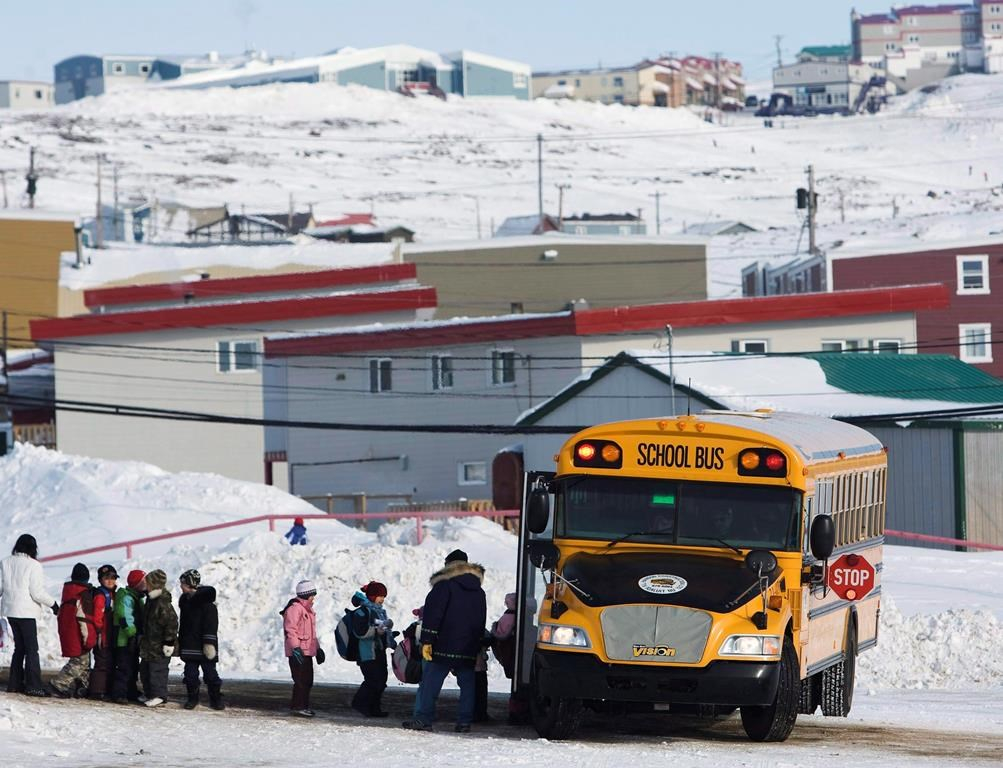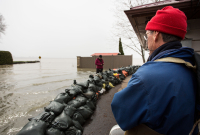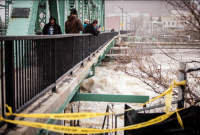Support strong Canadian climate journalism for 2025
Major transportation projects that are built to withstand climate disasters have a better chance of getting funding from the Trudeau government, says Transport Minister Marc Garneau.
The former astronaut-turned-politician announced Tuesday that the government is now accepting proposals for projects that would draw from its National Trade Corridors Fund, a $2-billion, 11-year initiative targeting congestion at ports, airports, railways, border crossings and other high traffic locations.
Part of its package of transportation funding would be to “undertake climate risk assessments," the federal government promised in its spring budget. Speaking to reporters after giving a keynote address at an Ottawa Chamber of Commerce luncheon on July 4, the minister said proposals that consider climate risk would be favoured. Extreme weather events can pose "a risk to reliable transportation or a bottleneck," he explained, and proposals that take them into account will hold an advantage over ones that don't.
“We need to realize that sometimes, in a country like Canada, where we have flooding, where we have avalanches, where we have other natural events, that [climate] can sometimes jeopardize the free flow and the fluid and efficient flow of goods," he said.
Scientists and governments from around the world agree that human activity is contributing to climate change, but that countries can minimize impacts by slashing greenhouse gases and by beginning to adapt to the changes that are already underway. Global warming has been linked by scientists to extreme weather events like flooding and drought.
Infrastructure proposals under the trade corridors fund are due by Sept. 5, 2017. Garneau expects to receive proposals from other levels of government, as well as Indigenous groups, non-profits, for-profits, Crown corporations, and Canadian port and airport authorities, he said.
“What we’re waiting for is to hear from all of the stakeholders that I identified today as to what they consider to be the vulnerable parts of the trade corridors, or the bottlenecked ones, where things are slowing down, and there are queues of goods that are having to wait unnecessarily long,” said Garneau.
After Sept. 5, the government will begin the process of picking projects, which the minister said will get the go-ahead in “early 2018.”
The 2017 federal budget allocated $16 million over five years for climate risk assessments for trade and transportation, starting with $3 million in the 2017-18 fiscal year.

Big dollars for northern infrastructure
In addition to climate risk, the criteria will be based on how much impact a particular project has in terms of “de-bottlenecking our trade and transportation corridors,” said the minister.
“If it is viewed as having a major impact, it's obviously going to have more chances of going forward,” he said.
The government is hoping to use its new fund to address congestion at ports that slow business, like when ships load or unload, or trucks pass through border stations.
Supporting the high volume of traffic across the Canada-United States border is of particular concern, as is bolstering ports in Vancouver and Montreal to leverage Asian and European trade. Currently, Garneau estimated, 30,000 trucks and 4,600 rail cars pass through the border each day.
The fund will also dedicate $400 million for northern transportation infrastructure, the budget said. Garneau pointed to plans to install a deep sea port in Iqaluit, and suggested that this kind of project could be considered elsewhere in the North.
“It’s that kind of infrastructure that will be taken into consideration,” he said.

Ottawa considering 'high-frequency' rail expansion
The trade corridors fund itself is part of the Liberals’ 11-year, $10.1-billion trade and transportation initiative.
That includes $50 million over 11 years for a “Trade and Transportation Information System,” including a new “Canadian Centre on Transportation Data” with Statistics Canada.
"You can’t manage what you don’t measure,” said Garneau, introducing the concept of the proposed data system to the crowd at the Shaw Centre in Ottawa.
The budget also committed $76.7 million over five years, starting in 2017–18, for efforts to bring Transport Canada into the age of drones and self-driving cars. The money will be used to develop regulations, pilot projects, a new test centre and new standards and certifications for these autonomous vehicles.
The initiative also includes more than a billion dollars, spread out between three and five years, to support VIA Rail and ferry services in the Atlantic and Quebec regions, as well as $152 million in 2017–18 for security screening at airports.
The Ontario government is currently looking at whether to install high-speed rail between Toronto and Windsor across the province's south. Separately, VIA rail has also proposed a multi-billion dollar "high-frequency rail" expansion.
Garneau said his department and others are studying VIA's proposal that would offer more trains per day at a “higher speed," but noted this wasn't considered to be the same as high-speed rail.
"We’re looking at viability of that project...I hope we'll have something to say in the next six months," he said.






Comments
Carr (Natural Resources Minister) needs to follow Garneau's lead vis-à-vis pipelines.
Put the challenge out to him that only environmentally acceptable criteria can be used to hear applications.